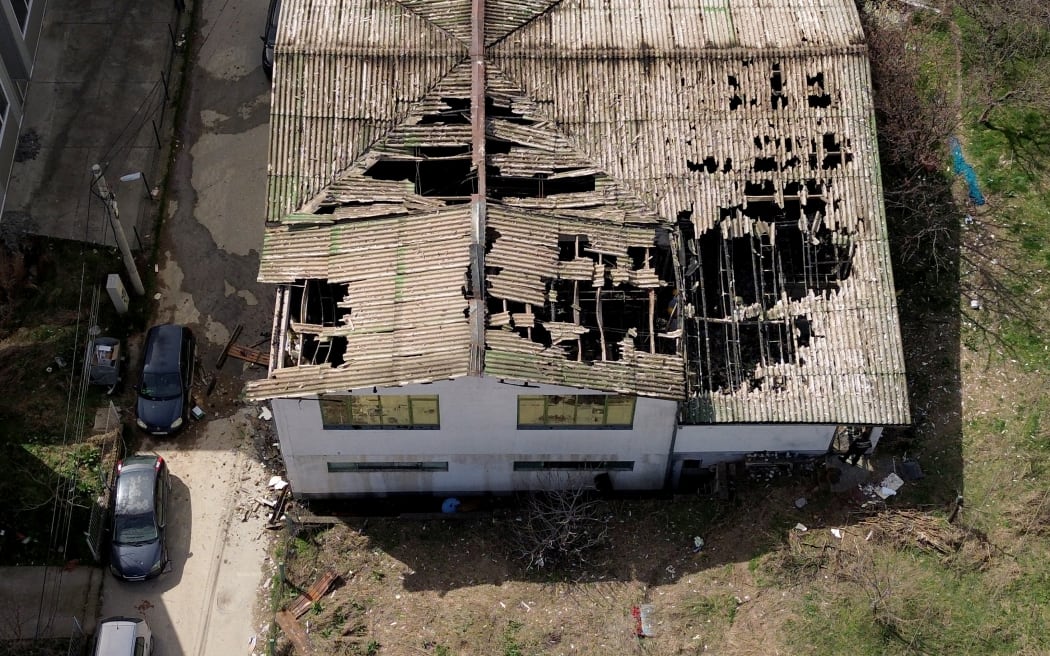Flooding in Australia has caused “incredible” damage to communities throughout northern Queensland, according to the state’s premier, despite conditions improving more rapidly than expected.
On Tuesday, thousands of evacuated residents began to return to their homes, although there are concerns that hundreds of properties and businesses have been affected by the flooding. Tragically, two fatalities have been reported.
“This disaster will challenge the resilience of our communities,” stated Queensland Premier David Crisafulli during an interview with ABC.
Certain areas of the region have experienced nearly 2 meters (6.5 feet) of rainfall since Saturday, leading to ongoing flood alerts and power outages. However, the premier noted that the weather has been “remarkably kind” in recent hours.
In Townsville, residents awoke on Tuesday to overcast skies and light rain, accompanied by the reassuring news that anticipated flooding levels had not occurred. This situation marked a significant departure from the severe rainfall that had impacted the area in recent days.
Andrew Robinson, chair of the Townsville Local Disaster Management Group, informed reporters, “We believe that the danger has passed.” He referenced earlier predictions that indicated up to 2,000 homes in Townsville could be at risk of flooding, stating that “the city had dodged a bullet.”
Local resident Jo Berry shared her experience with the BBC, mentioning that she and her family were returning home on Tuesday after a restless night spent watching the rainfall. “People talk about PTSD when it rains here, and I completely understand,” said Ms. Berry, who originally hails from Leicester in the UK. “We have lived in this house for over 20 years and have experienced several cyclone events and the 2019 flooding, so this is not our first rodeo,” she noted, referencing a flooding disaster that resulted in A$1.24 billion (£620 million; $770 million) in damages.
On Monday evening, local residents expressed to the BBC that they felt “on edge” as they anxiously awaited news about the fate of their homes. Meanwhile, further north in the state, power outages and damaged roads have hindered efforts to fully evaluate the devastation in towns like Ingham and Cardwell. Crisafulli indicated that initial assessments revealed the damage to be “truly astonishing,” noting that Ingham, which is largely without electricity, “presents the greatest challenge.”
“There are individuals who have been flooded in their homes, businesses, and farms,” he informed reporters on Tuesday. Local media footage depicted long queues at the town’s supermarket as residents sought essential supplies. Crisafulli mentioned that despite the power outage, the local hospital continued to function normally, and a petrol station remained operational.
The flooding has inflicted significant harm on homes, crops, and the coastline, according to local MP Nick Dametto in a video shared online. “The flooding is unprecedented,” he remarked. Ingham, with a population of fewer than 5,000, is already grappling with the aftermath of a tragic incident where a 63-year-old woman lost her life when a State Emergency Service (SES) dinghy capsized during a rescue operation on Sunday.
Over 8,000 properties in northern Queensland are currently without electricity, as reported by the state’s energy provider. The partial collapse of a vital highway is complicating efforts to assist some of the most severely affected regions. Crisafulli indicated that the recovery process would require “some time,” emphasizing that the immediate focus would be on collaborating with the military to deliver power generators to remote communities and restore their electricity supply. He also mentioned that federal funding would be instrumental in rebuilding the damaged Bruce Highway, which is the primary route in the state, extending 1,673 kilometers (1,039 miles) from the south.
Northern Queensland, situated in a tropical climate, is particularly susceptible to severe cyclones, storms, and flooding. In an interview with the BBC in Townsville, local resident and climate expert Scott Heron remarked that the recent disaster was anticipated. “Climate scientists have long warned that extreme weather events will intensify, and we are witnessing that reality,” stated Prof. Heron, who is affiliated with James Cook University and holds the Unesco Chair on Climate Vulnerability of Heritage. He urged policymakers to take this into account when planning recovery and reconstruction efforts, including those for the Bruce Highway. He cautioned that failing to integrate considerations of climate change into infrastructure planning, especially for long-term projects like roads and bridges, would amount to “wasting public money.”




